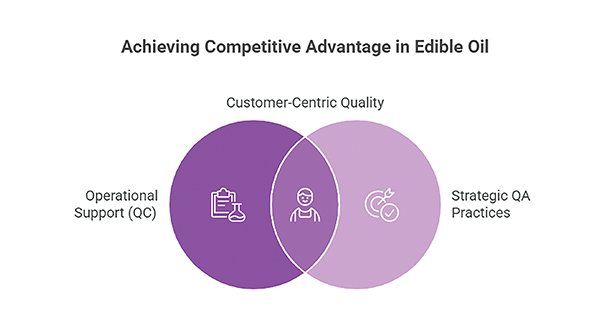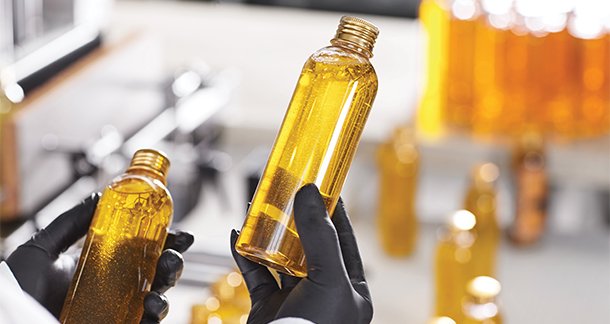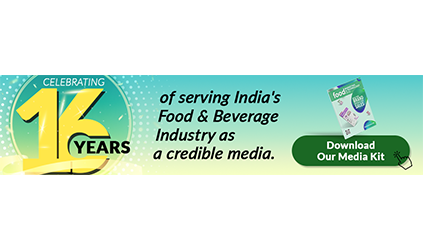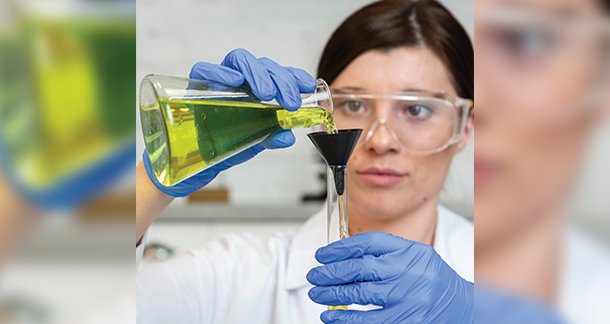Introduction: Importance of Oil Quality
The quality of fats and oils has become increasingly important, not only because they are food products but also because quality gives producers a competitive edge in the marketplace. Quality depends on physical and chemical parameters, which are influenced by factors such as the oil source, geographic, climatic, and agronomic variables. Additionally, oil quality depends on the quality of oilseeds, processing conditions, and packaging.
Raw Material and Harvesting Considerations
Crops must be harvested at full maturity for the best oil yield. However, farmers may harvest prematurely due to economic pressures or fears of theft, which results in lower oil yields and higher moisture content—conditions that promote mould growth and aflatoxin contamination.
Mould growth in a few seeds or nuts can lead to contamination of entire batches. Processors should ideally work with farmers through contracts to ensure proper harvesting and post-harvest practices, such as drying, are followed to reduce risks. During the initial inspection, trained processing staff must remove discoloured or mouldy seeds to prevent aflatoxins and off-flavours in oil.
QA vs. QC: A Comparative Overview
|
Quality Assurance (QA) |
Quality Control (QC) |
|
Process-oriented |
Product-oriented |
|
Focus on defect prevention |
Focus on defect identification |
|
Ensures quality in development processes |
Ensures quality in finished products |
|
Aims to prevent defects from arising |
Identifies defects before product release |
|
Involves systematic, documented activities |
Involves inspections and testing |
|
Managerial tool |
Corrective tool |
QA Procedures in Edible oil processing
In edible oil processing, quality assurance (QA) procedures focus on maintaining key product attributes such as colour, clarity, flavour, and odour. Colour and clarity are primarily achieved through proper clarification after oil extraction, while flavour and odour are influenced by the quality of raw materials and the level of rancidity.

Hazard Analysis and HACCP
Hazard analysis in oil production involves identifying potential risks that could compromise product safety or quality. These risks include contaminants such as aflatoxins, pesticide residues, and physical impurities like metal or glass fragments, as well as issues arising from improper storage or handling by staff. To manage these risks, a Hazard Analysis and Critical Control Points (HACCP) plan is implemented.
Benefits of TQM and HACCP
The implementation of Total Quality Management (TQM) and Hazard Analysis and Critical Control Points (HACCP) systems offers numerous benefits to edible oil manufacturers. These include more cost-effective production processes and a significant reduction in material wastage, contributing to overall operational efficiency.
Analytical Methods for Quality Testing
Traditionally, labs have used spectrophotometers, colorimeters, and turbidimeters for quality analysis—methods requiring sample extraction and time-consuming testing. Modern analytical methods have significantly improved the efficiency and accuracy of quality control in edible oil processing. Inline analyzers, such as colorimeters and turbidimeters, enable real-time monitoring of the production process, allowing for immediate detection of deviations and quicker corrective actions. FT-NIR (Fourier Transform Near Infrared) spectrometry is used to assess overall oil quality and detect residues in oilseeds. Gas chromatography is employed to measure the fatty acid composition, providing critical data for product specification and process control. Additionally, NIR (Near Infrared) spectroscopy is an effective method for evaluating key parameters in deep-frying oils, such as Total Polar Compounds (TPC) and Polymerized Triacylglycerols (TAG). These techniques are supported by standardized testing protocols established by organizations like the American Oil Chemists’ Society (AOCS) and the Indian Standards Institute (ISI), ensuring consistency and reliability in quality assessments.
QA as Strategic Function
QA equips oil plants with know-how to deliver top-quality products. QC supports this by identifying and correcting defects. Training lab and production staff is crucial to meeting quality goals. Today, many vegetable oil manufacturers operate state-of-the-art R&D and QC labs.
Quality, process, and packaging standards are interlinked. For instance, excellent oil packaged in leaky pouches reflects poorly on quality. The quality process must begin with incoming raw material inspection.
Poor storage, subpar raw materials, and weak inventory control can lead to quality issues. Shelf life is critical—products must maintain high quality through distribution and sales periods.

Standardization and Certification
Standardization plays a vital role in ensuring consistent quality in edible oil production. Standard Operating Procedures (SOPs) serve as essential guidelines for conducting routine quality checks at every stage of processing. Industry certifications such as ISO 9001 (quality management), ISO 14001 (environmental management), and OHSAS 18001 (occupational health and safety) reflect a company’s dedication to maintaining high standards and continuous improvement.
Specialized Instruments and Processes
In quality control, specialized instruments and processing steps are used to maintain and enhance oil quality. Monitoring chlorophyll levels is important, as high chlorophyll content can reduce shelf life; colorimeters are used to detect and quantify chlorophyll, allowing timely intervention. During the bleaching process, controlled amounts of clay are added to remove colored impurities, with turbidimeters employed to measure turbidity and ensure clarity. Deodorization, the final step in oil refining, involves the distillation of volatile compounds and is followed by comprehensive quality checks before the oil is stored or packaged. These processes collectively ensure that the final product meets stringent quality and safety standards.
Summary and Strategic Outlook
Edible oil producers must engage customers across the value chain. While operational support through quality control (QC) ensures product consistency and compliance with specifications, strategic quality assurance (QA) practices play a broader role in safeguarding brand equity and sustaining long-term competitiveness. QA involves embedding quality into every facet of the business—from sourcing and processing to packaging, logistics, and customer service—thereby fostering a culture of continuous improvement and accountability.
Certification alone is no longer enough—firms must redefine quality from the customer’s perspective, focusing not just on technical compliance but also on perceived value, trust, and satisfaction. This differential approach allows manufacturers to stand out in a saturated market by aligning product development and service delivery with evolving consumer expectations. By incorporating feedback loops, investing in innovation, and demonstrating a proactive commitment to quality and safety, companies can build stronger relationships with customers and secure their position in both domestic and global markets.
By Venkatesh Ganapathy



